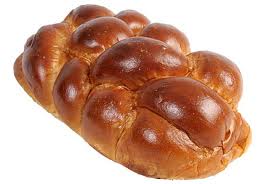
I can still smell the Shabbatot of my childhood home. My mother's chicken roasting in the oven, the smoke from the match that ignited our Shabbat candles, the sweet raisin challah my father bought at Zaro's Bakery on his way home from work. Indeed, Shabbat at home is often sanctified through food, ritual, and familial togetherness. Although a wonderfully diverse array of Shabbat practices exist among today's Jewish families, disparate Shabbat tables coalesce around the following rituals, creating a vibrant tapestry of Jewish peoplehood and tradition.
Nerot: Lighting the Shabbat Candles
Candle lighting signifies the onset of Shabbat and the conclusion of a hectic workweek. As the Sabbath lights are kindled and the blessing is recited, a moment of familial and individual transformation occurs. The flame kindles holiness, peace and joy within the home, and the proclamation of the blessing signifies one's personal acknowledgement of Shabbat.
Upon igniting the Sabbath lights we are reminded of God's first act of creation. As Abraham Joshua Heschel writes, "Just as creation began with the word, 'Let there be light!' - so does the celebration of creation begin with the kindling of lights."1
It is traditional to light two candles prior to sunset. Eliezer b. Joel Halevi (Ravya, twelfth-thirteenth centuries) first noted this custom, suggesting that it reflects the biblical commandments to "guard" (shamor) and "remember" (zakhor) Shabbat.2 These commandments are also referenced in Lecha Dodi, our Kabbalat Shabbat prayer welcoming the Sabbath bride.
Kiddush: Sanctifying Shabbat over Wine
Through Kiddush, we acknowledge two of God's greatest gifts - the Creation of the world and the Exodus from Egypt - and express gratitude for Shabbat, the divine gift we receive every week. The Kiddush is composed of two blessings: the first blesses the wine and the second distinguishes and sanctifies the day. The blessing over the wine is a rabbinic addition, designed to celebrate and "toast" God and our day of rest.
During the Kiddush, many families cover their challot (plural of challah) with beautiful hand-made covers. The custom of covering the challah while reciting Kiddush assuages the conundrum of what to bless first. Bread, one the one hand, is the main component of the daily meal and is generally honored first, as wheat and grains are mentioned before grapes in the Biblical listing of the seven species (Deuteronomy 8:8). However, the Shabbat meal commences with the Kiddush, which is inextricably linked with drinking wine. Accordingly, we cover the challah to simulate its absence during the Kiddush, and thus justify blessing the wine before the challah.
Challah: Blessing and Sharing Bread
Technically, "challah" does not connote the delicious braided bread baked to golden-browed perfection by Zaro's bakery. Rather, "challah" signifies the small fraction of bread that was once donated to the Temple, but today is removed and burned in commemoration. As one is especially mindful of the "challah" offering on Shabbat, the loaves consumed on Shabbat eventually became known as "challah."
It is customary to bless and eat two Challot, in order to recall the double portion of manna that God bestowed upon the Israelites during their time in the wilderness (Exodus 16:22). In addition, it is taught that the Temple's altar (a symbol of peace) was built with "unhewn" stones3 rather than tools of warfare. Accordingly, some families avoid cutting their challot, and instead, tear off pieces with their hands. This practice symbolizes the value of shalom bayit (peace in the home), a prerequisite for meaningful Shabbat ritual within the home. At some Shabbat tables, as the challah is blessed, each person touches the challah, or touches someone who is touching the challah, so that everyone is connected to that which nourishes and sustains - food, family, and love.
As life's daily commotions permeate our homes, home-based Shabbat rituals become increasingly valuable. Through thoughtful and deliberate "Shabbat at home" practices, our homes can reflect our most sacred values, and we are reminded of life's most important pursuits.
- Hechel, Abraham Joshua. The Sabbath. Canada: HarperCollins, 1951, pg. 66.
- Hoffman, Rabbi Lawrence, ed. My People's Prayer Book: Traditional Prayers, Modern Commentaries. Volume 7: Shabbat at Home. Woodstock, VT: Jewish Lights, 2004, pg. 49.
- Zion, Noam Sachs and Shawn Fields-Meyer. A Day Apart: Shabbat at Home: A Step-by-Step Guidebook with Blessings and Songs, Rituals and Reflections. Jerusalem: Shalom Hartman Institute, 2004, pg. 89.
Sarah Fishman is a rabbinical student at Hebrew Union College-Jewish Institute of Religion's New York campus.
Explore Jewish Life and Get Inspired
Subscribe for Emails